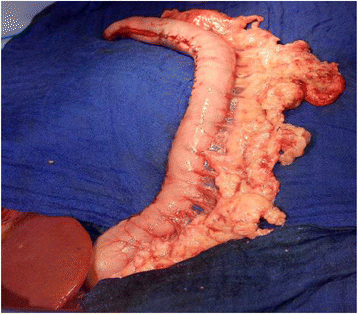Pylorus drainage procedures in thoracoabdominal esophagectomy - a single-center experience and review of the literature
- PMID: 29490701
- PMCID: PMC5831596
- DOI: 10.1186/s12893-018-0347-x
Pylorus drainage procedures in thoracoabdominal esophagectomy - a single-center experience and review of the literature
Abstract
Background: Pylorotomy and pyloroplasty in thoracoabdominal esophagectomy are routinely performed in many high-volume centers to prevent delayed gastric emptying (DGE) due to truncal vagotomy. Currently, controversy remains regarding the need for these practices. The present study aimed to determine the value and role of pyloric drainage procedures in esophagectomy with gastric replacement.
Methods: A retrospective review of prospectively collected data was performed for all consecutive patients who underwent thoracoabdominal resection of the esophagus between January 2009 and December 2016 at the Katharinenhospital in Stuttgart, Germany. Clinicopathologic features and surgical outcomes were evaluated with a focus on postoperative nutrition and gastric emptying.
Results: The study group included 170 patients who underwent thoracoabdominal esophageal resection with a gastric conduit using the Ivor Lewis approach. The median age of the patients was 64 years. Most patients were male (81%), and most suffered from adenocarcinoma of the esophagus (75%). The median hospital stay was 20 days, and the 30-day hospital death rate was 2.9%. According to the department standard, pylorotomy, pyloroplasty, or other pyloric drainage procedures were not performed in any of the patients. Overall, 28/170 patients showed clinical signs of DGE (16.5%).
Conclusions: In the literature, the rate of DGE after thoracoabdominal esophagectomy is reported to be approximately 15%, even with the use of pyloric drainage procedures. This rate is comparable to that reported in the present series in which no pyloric drainage procedures were performed. Therefore, we believe that pyloric drainage procedures may be unwarranted in thoracoabdominal esophagectomy. However, future randomized trials are needed to ultimately confirm this supposition.
Keywords: Delayed gastric emptying; Pyloroplasty; Pylorotomy; Pylorus drainage; Thoracoabdominal esophagectomy.
Conflict of interest statement
Ethics approval and consent to participate
The present study was approved by the institutional review board of the Klinikum Stuttgart and is in compliance with the Declaration of Helsinki. The study was designed as an observational retrospective analysis and therefore did not influence the therapy in any way.
Consent for publication
The present manuscript does not contain any individual’s data in any form.
Competing interests
The authors declare that they have no competing interests.
Publisher’s Note
Springer Nature remains neutral with regard to jurisdictional claims in published maps and institutional affiliations.
Figures

References
-
- Raymond DP, Seder CW, Wright CD, et al. Predictors of major morbidity or mortality after resection for esophageal cancer: a Society of Thoracic Surgeons general thoracic surgery database risk adjustment model. Ann Thorac Surg. 2016;102(1):207–214. doi: 10.1016/j.athoracsur.2016.04.055. - DOI - PMC - PubMed
MeSH terms
LinkOut - more resources
Full Text Sources
Other Literature Sources
Medical

